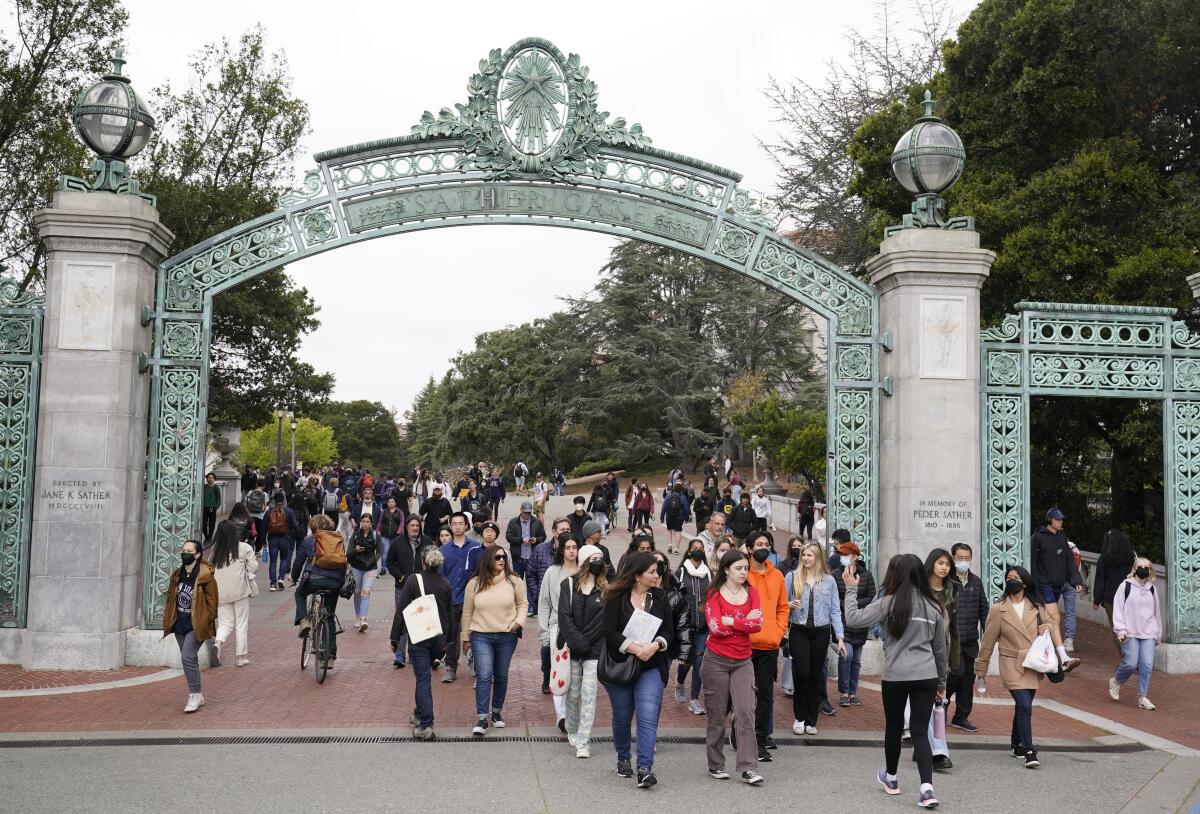
To the editor: Columnist George Skelton is right to call for supporting college education as an investment in our future. Too many politicians, business leaders and voters are focused solely on today, burning up our hopes in their desire to warm their hands over the ashes.
I would extend Skelton’s suggestion of free tuition to apply beyond just colleges. We desperately need vocational schools for those who want to become cooks, carpenters and technicians, all essential careers that are not going away. California should support schools that educate these workers.
Ideally, courses in those schools would extend beyond the strictly necessary subjects to include a few important topics useful in life. For example, a two-year program might include required courses in civil society and personal finance. This would help build an informed, thoughtful citizenry prepared to adapt to the many changes that are inevitable over a lifetime.
Geoff Kuenning, Claremont
..
To the editor: Many of you may not remember, but there was a time in the 1950s when you could attend Santa Monica City College with no tuition.
If you took the right courses and got a “C” average, you could get admitted to UCLA, where there was no tuition and only $46 in student fees, which included a season football ticket. This was when UCLA won a national championship.
Where did we go wrong?
Ben L. Holmes, Ketchum, Idaho
..
To the editor: I agree with Skelton on free tuition. As he notes, a significant amount of money from increased tuition has been used to fund aid to needy students. This is a hidden cost shift (a tax) onto wealthier families. They have numerous options for college, but high enrollment rates of their children are required to generate revenue.
This explains the arms race to build new fancy dorms, social centers and athletic facilities, which costs every student including those with limited resources.
Not addressed is four-year graduation rates, which schools tend not to emphasize in favor of their six-year graduation rates. Schools with poor fiscal management cut corners, and many of their students, especially those from lower-income families, can’t get the courses required to graduate on time. So, their loan debt grows.
University administrators in partnership with our state Legislature have created a hidden tax on the upper classes, whose members actually pay full tuition. Sacramento surely wastes more than the $7.7 billion generated annually in tuition and fees at state universities.
Howard C. Mandel, Los Angeles
..
To the editor: Kudos to Skelton for his column promoting free tuition in California. My four siblings and I were lucky enough to have this arrangement when we were attending college.
Our parents were Italian immigrants. The four boys became engineers, and my sister graduated with honors in library science. In return for funding our education, the state and country got a designer of drones and cruise missiles, a mechanical engineer who helped take pictures over Cuba during the missile crisis, a designer of electronic amplifiers and a language and library expert.
What Skelton should expose are the outrageous salaries pulled down by the leaders of these schools. We need a reset of these salaries, and we need to cut back on the literally dozens of vice presidents, vice chancellors and other administrators. I saw the waste firsthand during my 30 years at a California State University campus.
Dan Roberto, Pasadena